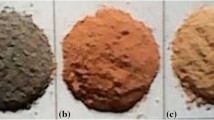Abstract
Huge amounts of cotton and fly ash wastes are disposed in countries all over the world. The majority of cotton wastes and fly ash are abandoned. It is a big problem to propose utilization of these by-products from the aspects of disposal, environmental pollution, and health hazards. This paper presents a parametric experimental study which investigates the potential use of cotton waste and fly ash in combination for producing a new low-cost and lightweight composite as a building material. The physical and mechanical properties of concrete mixes containing cotton waste and fly ash are investigated. The compressive strength, flexural strength, unit weight, and water absorption properties of this proposed material conform to relevant standards. The thermal insulation test of the proposed material was also carried out. The cotton waste and fly ash block house has been found to be superior to the concrete block house for sustained comfortable indoor temperatures. The process undertaken can be easily applied in classic brick plants. It yields a lighter weight composite having potential to be used for walls as an economical alternative to concrete blocks, ceiling panels, sound barrier panels, etc.






Similar content being viewed by others
References
Kılınçkale MF (1995) Effect of grinding type of fly ash in production of cement with fly ash, bulletin book of usage of ındustrial wastes in building trade. Union of Chambers of Turkish Engineers and Architects Publishing, Ankara
Abdun-Nur EA (1961) Fly ash in concrete: an evaluation-annotated bibliography, Highway Research Board Bulletin. Highway Research Board Publishing, Washington DC, pp 43–138 (No: 284)
Akman MS (1994) What trass cement is and what it is not. Union of Chambers of Turkish Engineers and Architects, Chamber of Civil Engineering, Ankara, pp 5–6
Ozturan T (1991) Efficiency of mineral additives in high strength concrete production. 2nd National Concrete Congress, İstanbul
Temiz H (1997) Evaluation of fly ash and silica fume as aggregates in concrete, Ph.D. thesis, Firat University, Elazığ
McCarthy MJ, Dhir RK (2005) Development of high volume fly ash cements for use in concrete construction. J Fuel 84:1423–1432
Yeginobalı A (2009) Concrete or asphalt road: which is more expensive? J Concr Eng 13:30–31
Tanrıverdi E (2003) Thermal insulation and energy savings. Turk Eng News 42:109–111
Luamkanchanaphan T, Chotikaprakhan S, Jarusombati S (2012) Study of physical mechanical and thermal properties for thermal ınsulation from narrow-leaved cattail fibers. APCBEE Proc 1:46–52
Briga-Sa A, Da Teixeira N, Pinto J, Caldeira F, Varum H, Paiva A (2013) Textile waste as an alternative thermal insulation building material solution. Constr Build Mater 38:155–160
de Wilde P, Voorden M (2004) Providing computational support for the election of energy saving building components. Energy Build 36:749–758
Lu W, Ma YT (2004) Image of energy consumption of well off society in China. Energy Convers Manag 45:1357–1367
Zhou X, Zheng F, Li H, Lu C (2010) An environment-friendly thermal insulation material from cotton stalk fibers. Energy Build 42:1070–1074
TS 2823, Turkish standard (1986) The classification, properties, sampling, testing and marking of structural members of pumice concrete
ASTM 67-03 (2003) Standards in buildings code, American society for testing and materials
TS 415, Turkish standard (1977) Calculations’ value of the thermal conductivity and thermal resistance for architectural and building use
Author information
Authors and Affiliations
Corresponding author
Rights and permissions
About this article
Cite this article
Binici, H., Aksogan, O. Engineering properties of insulation material made with cotton waste and fly ash. J Mater Cycles Waste Manag 17, 157–162 (2015). https://doi.org/10.1007/s10163-013-0218-6
Received:
Accepted:
Published:
Issue Date:
DOI: https://doi.org/10.1007/s10163-013-0218-6




